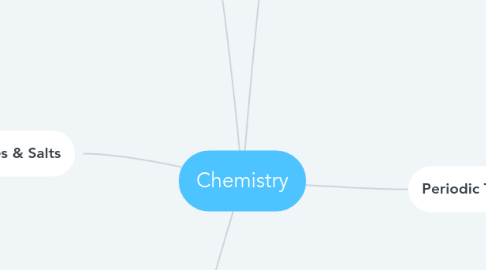
1. Metals
1.1. General properties of metals
1.2. Alloys
1.3. Reactions of metals
1.3.1. Reaction with water
1.3.2. reaction with steam
1.3.3. reaction with acids
1.3.4. displacement reactions
1.4. Extraction of Metals
1.4.1. extraction of aluminium
1.4.2. extraction of iron
1.4.3. extraction of zinc
2. Acids, Bases & Salts
2.1. Physical Properties of acids/bases
2.2. Definition of acids/bases
2.3. Strength of acids/bases
2.4. Chemical Properties of acids
2.4.1. Reaction with reactive metals
2.4.2. Reaction with metal oxides
2.4.3. Reaction with metal hydroxides
2.4.4. Reactions with metal carbonates
2.5. Chemical Properties of bases
2.5.1. Reaction with acids
2.5.2. Reaction with ammonium salts
2.6. Types of oxides
2.6.1. Reactions of oxides
2.7. Salt Preparation
2.7.1. Soluble salt
2.7.1.1. Titration
2.7.1.2. Reaction with acids
2.7.2. Insoluble salt
2.7.2.1. Precipitation
3. Chemical Bonding
3.1. Ionic bond
3.1.1. Giant ionic lattice structure
3.2. Covalent bond
3.2.1. Simple molecular structure
3.2.2. Macromolecular structure
3.3. Metallic bond
3.3.1. Giant metallic lattice structure
4. Electrolysis
4.1. electrolytic cell
4.1.1. Identify cathodes, anodes, electrolyte
4.1.2. Conditions
4.1.2.1. Molten ionic compound using inert electrodes
4.1.2.2. Dilute aqueous solution using inert electrodes
4.1.2.3. Concentrated aqueous solution using inert electrodes
4.1.2.4. Using non-inert electrodes
4.1.3. Predict products that will be formed
4.2. voltaic (simple) cell
4.2.1. Identify negative electrode (more reactive metal) where oxidation will occur
4.2.2. The further away the metals are in the metal reactivity series, the larger will be the potential difference (voltage)
5. Periodic Table
5.1. Group I
5.1.1. Properties
5.1.2. Trends down the Group
5.1.2.1. Densities
5.1.2.2. Melting/boiling points
5.1.2.3. Reactivities
5.1.3. Reactions
5.1.3.1. Reaction with water
5.2. Group VII
5.2.1. Properties
5.2.2. Trends down the Group
5.2.2.1. Colour
5.2.2.2. Melting/boiling points
5.2.2.3. Reactivities
5.2.3. Reactions
5.2.3.1. Displacement of halogens (more reactive halogen will displace a less reactive halogen from its aqueous solution)
5.3. Group 0 (properties)
5.3.1. Why are Group 0 elements unreactive? Why are they monoatomic?
5.3.2. Uses of Group 0 elements
5.4. Transition metals
5.4.1. Properties
5.4.1.1. Form coloured compounds
5.4.2. Uses
